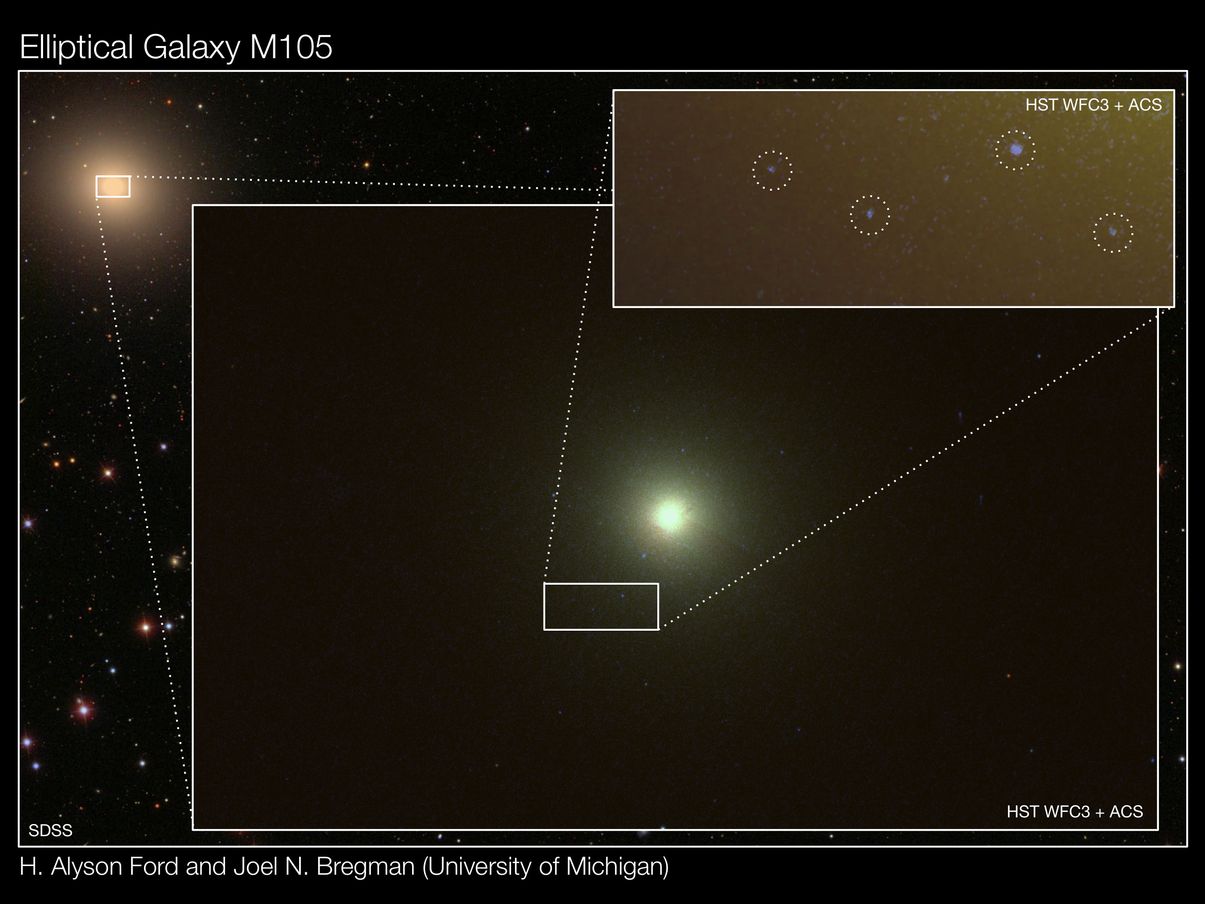Astronomers are confused that giant elliptical galaxies containing old stars have been found to have regions actively forming new stars in a continuous process. These galaxies were thought to be old ‘dead’ structures, containing little cold gas to condense into new stars.
http://www.physorg.com/news/2011-05-dead-galaxies.html
—————————
In response to the above posting of gmagee, astronomers were wrong to think that such elliptical galaxies would be dead; i.e., not forming stars. There is no such thing as a “dead galaxy” in subquantum kinetics. According to SQK, all galaxies are gradually growing in size and generating increasing amounts of matter. The research team, whose findings are reported in the above news article, studied stars in the elliptical galaxy M105, seen below. Conventional astronomy refers to elliptical galaxies as “dead galaxies” because they are not seen to contain massive blue stars which conventional astronomy considers to be indicative of recent star formation.
However, Alyson Ford and Joel Bregman found that M105 does contain bluegiant stars, which in conventional astronomy are indicative of recent star formation; see circles in image blowup. They estimated that stars must be forming in this galaxy at the rate of 10-4 M◉ per year. According to SQK, this galaxy would have a far higher matter creation rate through parthenogenesis taking place within each star and within its massive mother star core.
M105 is estimated to have a diameter of about 55,000 light years and a mass of about 100 billion solar masses. Hence it is about half the diameter of the Milky Way and about one tenth as massive. If its stars had a matter creation rate comparable to that of the Sun, its total stellar mass would be increasing at the rate of ~0.1 M◉ per year. Also M105 is known to have a core mass equaling around 50 million M◉, hence about 12 times more massive than the Milky Way’s core. If this were to have a matter creation rate per unit solar mass comparable with what I have estimated occurs in the core of the Milky Way, then the core of M105 would be generating matter at the rate of 100 M◉ per year, 1000 fold larger than the SQK estimate for matter creation within this galaxy’s stars, and a million fold larger than the star formation rate estimated by Ford and Bregman. This would imply that M105 is in fact growing at least 10 times faster than the Milky Way and that within the next 10 billion years it will have caught up with us, developing into a mature spiral galaxy.
Evidence that the core of M105 has been active in the past is seen in this magnified view of the inner 15,000 light year region of M105 taken with the Hubble Space Telescope; see below.
The dust ring seen here has a diameter of about 10,000 light years (3 kpc) and and may be compared to the 5 kpc diameter molecular cloud ring that encircles the core of our own Galaxy at a radial distance of about 2.5 kpc from the center. The Milky Ways molecular ring engages in radial motion suggestive of past core activity. Similarly, the presence of this ring in M105 suggests that there has been past explosive activity of its core as well, radial ejection of both gas and cosmic rays. So in this sense M105 is by no means a dead galaxy.
P. LaViolette


